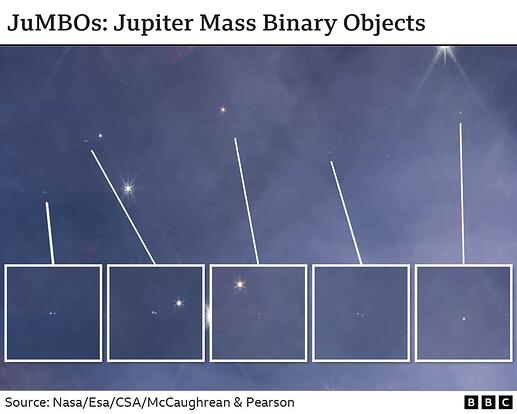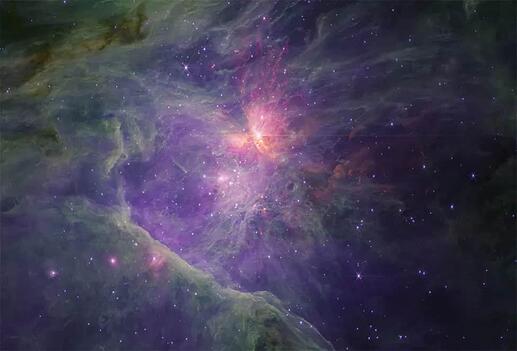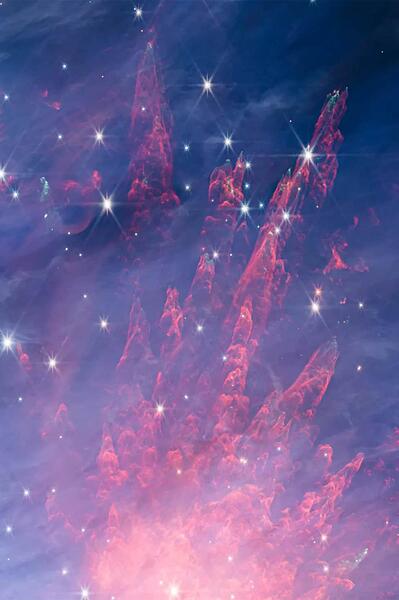This is fascinating. Using the space telescope astronomers have discovered very large mass objects that are planet sized, in fact Jupiter planet size and bigger, that do not have a star to rotate around. And seem to exist in pairs.
Jupiter mass binary objects (Jumbos - those scientists are such a hoot) appear to defy physics. Planets, it is assumed, need a star as it is the rotation around the massive gravity of the star that pulls rock debris into a planet. No star then surely you’d just get floating debris?
Seems not. Fascinating.
The Jumbos are about 1m years old – babies in astronomical terms – and have infernal surface temperatures of roughly 1,000C. Without a host star, though, they will rapidly cool and will briefly feature temperatures in the range of habitability before becoming incredibly cold. However, as gas giants, their surfaces would not harbour liquid water, even during their brief temperate window, meaning they are not likely to be strong contenders for hosting alien life.
The large, hot, gassy objects appear to be planet-like in their composition, with analysis revealing steam and methane in their atmospheres, but they are not technically planets. The team settled on the name Jupiter-mass binary objects because, out of the hundreds of planet-like objects identified, dozens came in pairs.
“Most of us don’t have time to get wrapped up in this debate about what is a planet and what isn’t a planet,” McCaughrean said. “It’s like my cat is a chihuahua-mass pet. But it’s not a chihuahua, it’s a cat.”
Planets, Jim, but not as we know them … more like ephemera, in astronomical terms … here today and (probably) gone tomorrow … ![]()
They seem very strict about this sort of thing.Pluto was down graded because it “has not cleared its neighboring region of other objects.”
What happened to the particles that behaved differently when being observed, stage fright probably 
Jumbos:
Some of the photos becoming available re awe-inspiring (double-clicking on the photos should produce significantly larger images):
At just 1,400 light-years from Earth, the Orion Nebula, M42, is visible to the naked eye as a faint smudge
Orion Molecular Cloud 1 outflow: The “fingertips” are tinged with iron




